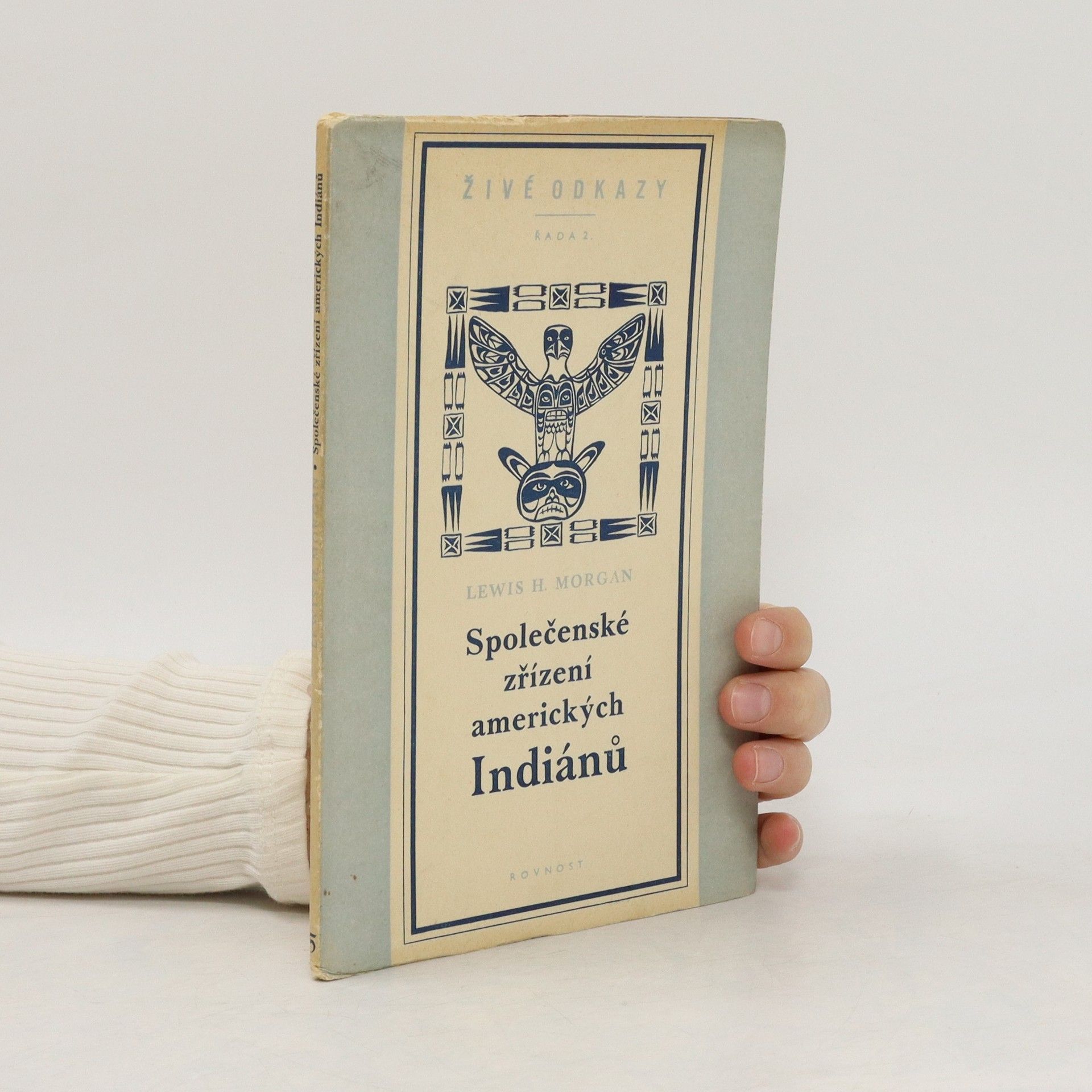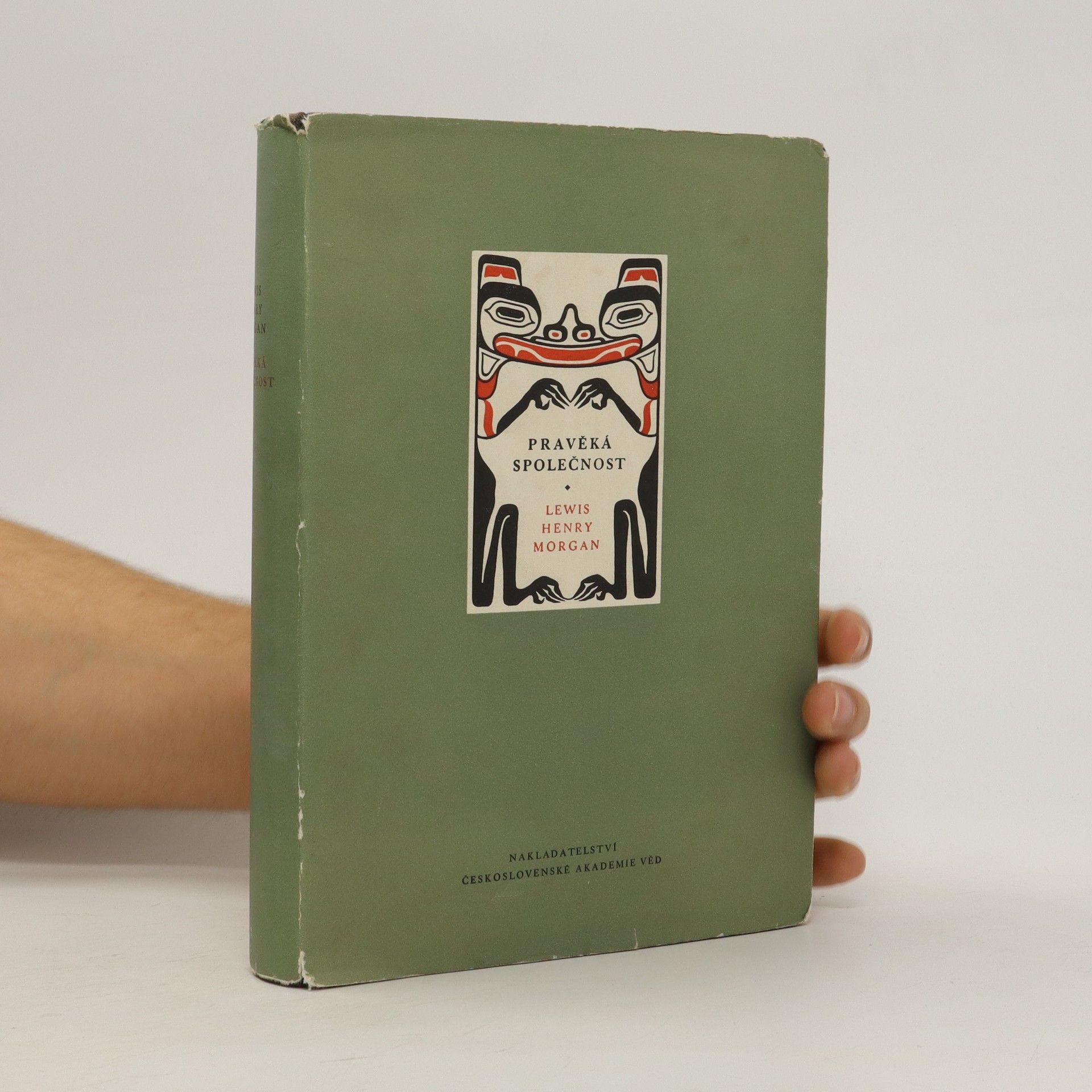Podtitul: Výzkumy o průběhu lidského pokroku od divošství přes barbarství k civilizace. Antropologická kniha předního amerického etnografa zaměřená zejména na Irokéze.
Lewis Henry Morgan Knihy
Lewis Henry Morgan bol priekopnícky americký antropológ a sociálny teoretik, známy najmä svojou prácou o príbuzenstve a sociálnej štruktúre, ako aj svojimi teóriami o sociálnej evolúcii. Jeho štúdie o príbuzenstve viedli k jeho skorým podporám teórie, že domorodé národy Ameriky migrovali z Ázie v dávnych časoch. Morganove sociálne teórie mali vplyv na neskorších ľavicových teoretikov a je jediným americkým sociálnym teoretikom, na ktorého sa odvolávali Charles Darwin, Karl Marx a Sigmund Freud.







Výňatek z velkého díla o pravěké společnosti, které bylo oceněno Marxem a Engelsem jako důležitý přínos k materialistickému rozboru prvobytné společnosti. Je vysvětlena rodová organizace indiánských kmenů, popsány její stupně - rod, fratrie, kmen. konfederace - a zdůrazněn zásadní rozdíl rodové společnosti a státu. V předmluvě podává překladatel přehled životního díla L.H. Morgana a hodnotí jeho význam pro teorii historického materialismu.
The Play That Goes Wrong
- 82 stránok
- 3 hodiny čítania
"The Play That Goes Wrong is a hilarious, farcical murder mystery, a play-within-a-play, conceived and performed by award-winning company Mischief Theatre. ... This edition features the updated, two-act script, developed for the production's revival and tour in 2014."--Back cover.
The book is recognized for its significant contributions to literature, particularly in relation to the Iroquois culture. It serves as an essential resource for scholars and future generations, preserving the original format and annotations from its first publication. This dedication to authenticity ensures that the work remains a valuable part of literary and cultural history.
The Christian Humanitarian Reading Initiative for Spiritual Theatre (or C.H.R.I.S.T. for short) are putting on a production of The Nativity Story. It's opening night and nothing is going to plan. Despite a collapsing manger, a deranged donkey, and a director on the brink of hysteria, the show must go on.This hilarious tour-de-force is the second farce from Theatre Mischief, creators of the critically acclaimed T he Play That Goes Wrong . Once again, we watch as order unravels itself and pandemonium ensues in a piece that will be loved both as a piece to perform and one to watch.The Nativity Goes Wrong received its world premiere at Reading Rep on 22 December.
Ancient Society
Or, researches in the lines of human progress from savagery, through barbarism to civilization
- 588 stránok
- 21 hodin čítania
Exploring the evolution of human societies, this work delves into the progression from primitive savagery through stages of barbarism to the complexities of civilization. The author examines cultural and social developments, providing insights into the historical context of human advancement. This reprint retains the original's scholarly approach, making it a valuable resource for understanding the foundations of societal structures and human behavior.
Montezuma's Dinner; an Essay on the Tribal Society of North American Indians
- 84 stránok
- 3 hodiny čítania
A Conjectural Solution of the Origin of the Classificatory System of Relationship
- 106 stránok
- 4 hodiny čítania
Smithsonian Contributions to Knowledge
- 604 stránok
- 22 hodin čítania
This work has been selected by scholars as being culturally important, and is part of the knowledge base of civilization as we know it. This work was reproduced from the original artifact, and remains as true to the original work as possible. Therefore, you will see the original copyright references, library stamps (as most of these works have been housed in our most important libraries around the world), and other notations in the work. This work is in the public domain in the United States of America, and possibly other nations. Within the United States, you may freely copy and distribute this work, as no entity (individual or corporate) has a copyright on the body of the work. As a reproduction of a historical artifact, this work may contain missing or blurred pages, poor pictures, errant marks, etc. Scholars believe, and we concur, that this work is important enough to be preserved, reproduced, and made generally available to the public. We appreciate your support of the preservation process, and thank you for being an important part of keeping this knowledge alive and relevant.
League of the Ho-Dé-No-Sau-Nee Or Iroquois; Volume 1
- 396 stránok
- 14 hodin čítania